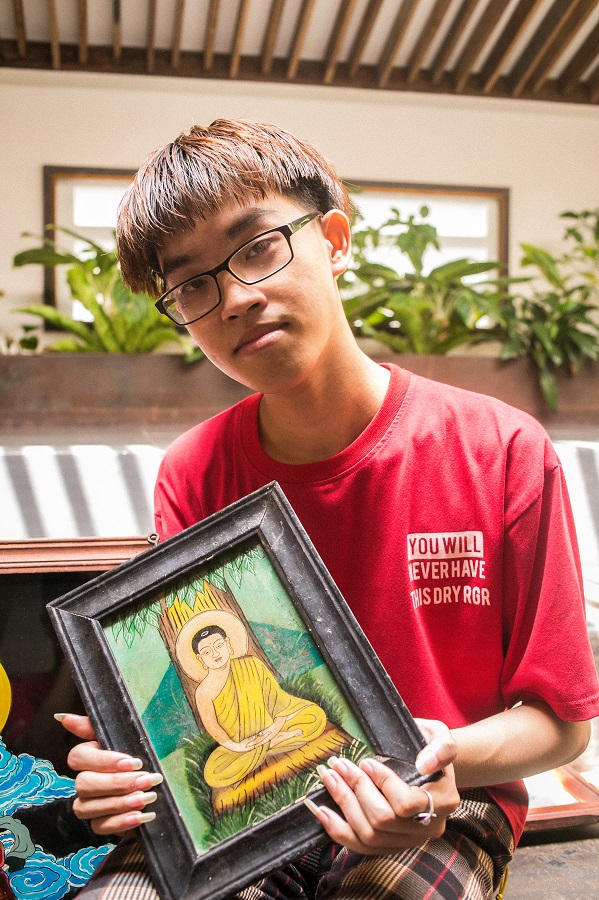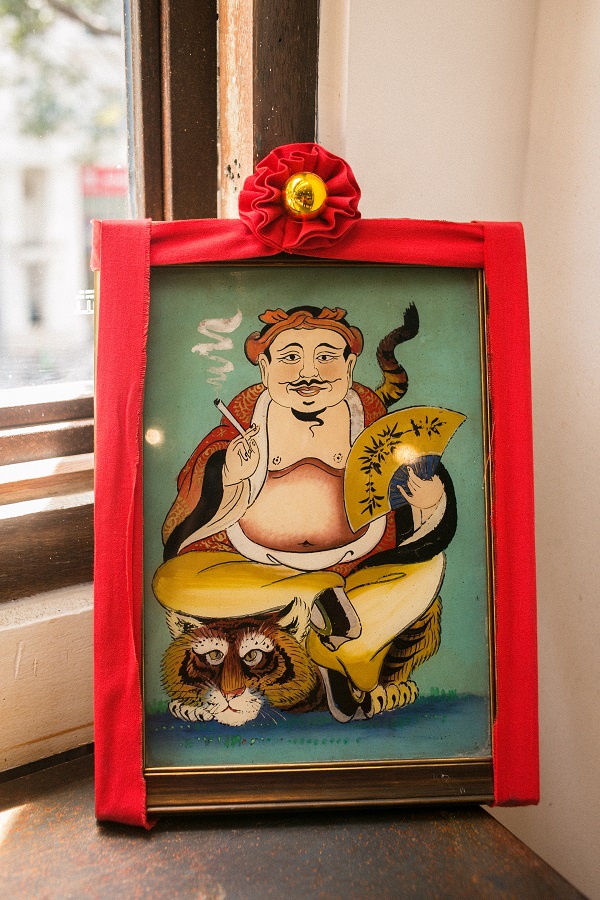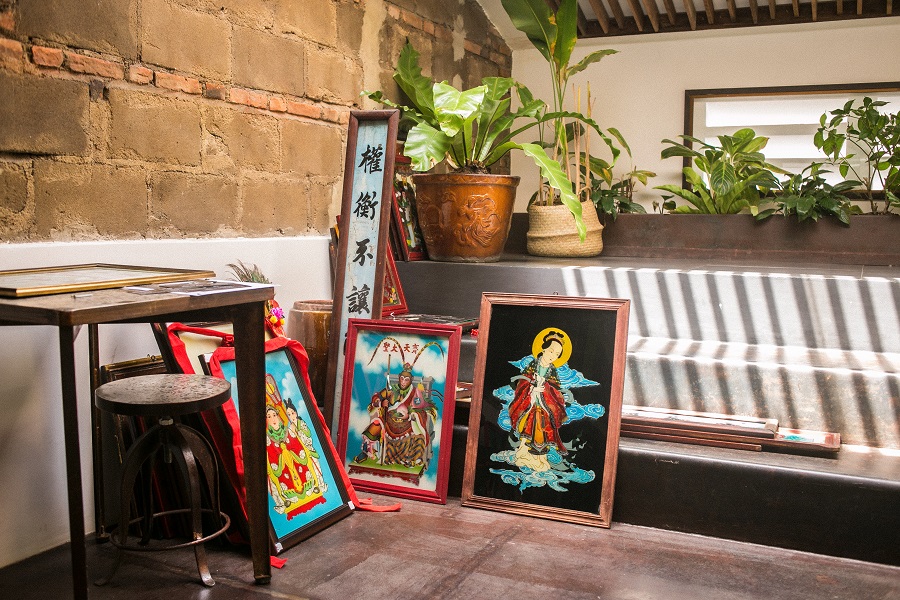Artist bridging past and future with reverse glass painting
A traditional art form has an unlikely champion in student Nguyen Duc Huy. The 22-year-old, in his second year of graphic design at Ton Duc Thang University, is an avid collector of reverse glass paintings.
While reverse glass painting has been practiced as an art form around the world for centuries, its start in Vietnam can be traced to Chinese immigrants around the turn of the last century. The paintings were inexpensive to produce and purchase, and over the decades migrated further south, becoming a very popular art form in southern Vietnam. Typically the paintings would hang in homes above doorways and alters for decoration and to bring good luck. You’ve also seen them hanging in temples and pagodas. The paintings reference classic Vietnamese myths and folk tales, Buddhism and landscapes. As the style spread so did access to them from rural farms to wealthy urban homes. Huy explains the colonial revolution against the French put a stop to the materials used in glass painting and the art form did not pick up in popularity afterwards. Perhaps a decade later, he says there was a resurgence and new materials introduced such as metallic paint and mother of pearl, but it has been on a downward trajectory ever since.
He shows me pieces of glass at different stages of painting and demonstrates painting a piece of glass with the outline of a lotus flower in Chinese black ink. Flipping it over, the viewer will see the reverses of the image. Huy says original colors for the paints were sourced from bark, flowers, leaves and ash and sometimes mixed with tung tree oil. Now acrylic paint or even indoor wall paint is used. Huy restores the paintings he finds by himself. For example, after gently cleaning, he will spray a layer of glossy transparent acrylic to prevent any further paint from chipping off. He fills in and paint-traces any missing outlines with Chinese black ink and then repaints the missing color sections. He may or may not do a second coat depending on the level of damage.

“I started collecting the old enamel pottery,” he says, “and I kept finding all this old glass, just tossed in the garbage.” His pottery collecting took him all over Ho Chi Minh City and then he started going further afield into the surrounding provinces. “But I had to take the bus everywhere and walk a lot,” Huy laughs, “because I started when I was 15 or 16 years old.” He feels this art is disappearing for a number of reasons. “Someone dies and this stuff is just thrown out,” he says. “I think I’m the only one collecting glass painting.” Elsewhere, for example, Viet Nam News says there are fewer than ten southern artists known to be actively painting on glass.
Ably assisted in translation by Huy’s colleague, Nguyen Minh Thu, as we sit at Common 9 Cafe where Huy is holding the first of what he hopes to be a number of glass exhibitions. Minh Thu and Huy met at university when she asked Huy to look over her master’s thesis on Lai Thieu pottery, a ceramics village in Binh Duong province, just northeast of Ho Chi Minh City that became famous for producing southern Vietnam’s “household” items. Walking around the exhibit, one of his oldest paintings is of Guan Yin (the Chinese version of Quan Am, the Vietnamese bodhisattva of compassion or goddess of mercy) painted in 1927. The newest is one by him done this year.
Huy says these paintings are also important because daily life, landscapes, wishes for peace—in other words the community itself—is reflected. His purpose in collecting and restoring is to bring younger audiences to a traditional art form and to help promote the values of traditional art forms. “These are a valuable reminder of Saigon’s past and the south’s past,” he says. “This old style is a part of us.” He feels the images are neither ecstatic nor sad, rather entirely pragmatic given as so many tend to pastoral scenes, nature, still lifes and even livestock.
Huy is a bridge between past and present. “The young will say, ‘oh that’s my grandfather’s painting’, but hopefully they will also say, ‘hey, what’s that painting over there?’” He’s referring to his Quan Am, modestly hung away from the other paintings. It’s a stylized Quan Am because Huy’s goddess is painted on a very modern-looking black background. He explains traditionally backgrounds were a light color such as yellow or orange or not painted at all so you can “see” the glass.

Huy wants to collaborate with others to serve communities by having the glass paintings back in local temples or pagodas or a museum. Ideally an organization would take the 60-odd paintings he’s collected so far and exhibit them. He says at the moment, his glass paintings likely have more historical and cultural value rather than numeric value because it’s a dying art.
Huy is frank about why he collects. “This is so important to Saigon, but now many don’t care,” he says. “Many of the existing glass painters are old and they’re dying and there are no young people picking up the art.” He notes that originally it was young boys who were apprenticed to be glass painters and that they entered the art form as a career path. “It was really popular,” he says. Huy is the channel encouraging other artists to take an interest in continuing the traditional style or like him, playing with and adapting the form. If it’s not taken up and championed it will be lost soon, he says. “It really will go extinct.”
For more on Huy’s work, visit www.facebook.com/dauansaigon16
Images by Vy Lam



